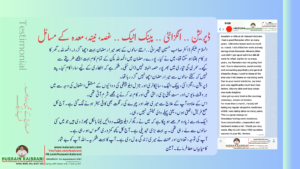Hodgkin’s lymphoma, also known as Hodgkin’s disease, is a type of lymphoma first described by Thomas Hodgkin in 1832. Hodgkin’s lymphoma is characterized clinically by the orderly spread of disease from one lymph node group to another and by the development of systemic symptoms with advanced disease. Pathologically, the disease is characterized by the presence of Reed-Sternberg cells (RS cells). Hodgkin’s lymphoma was one of the first cancers to be cured by radiation. Later it was one of the first to be cured by combination chemotherapy. The survival rate is generally around 90% when the disease is detected relatively early, making it one of the most curable forms of cancer. Later-stage cancers show a significantly worse prognosis [1]. The Handbook of Cancer Chemotherapy, Sixth Edition states that “the potential for cure should not lead clinicians and patients to lose sight of the fact that [Hodgkin’s lymphoma] is a malignancy and that approximately 20% to 25% of patients die of the disease.”[2] Nevertheless, recent trials are showing much higher 5-year survival rates than have previously been seen, often on the order of 98% for many patients. [3]
Epidemiology
Unlike some other lymphomas, whose incidence increases with age, Hodgkin’s lymphoma has a bimodal incidence curve; that is, it occurs most frequently in two separate age groups, the first being young adulthood (age 15–35) and the second being in those over 55 years old although these peaks may vary slightly with nationality.[4] Overall, it is more common in males, except for the nodular sclerosis variant (see below), which is more common in females.
The annual incidence of Hodgkin’s lymphoma is about one in 25,000 people, and the disease accounts for slightly less than 1% of all cancers worldwide.
The incidence of Hodgkin’s lymphoma is increased in patients with HIV infection.[5] In contrast to many other lymphomas associated with HIV infection it occurs most commonly in patients with higher CD4 T cell counts.
Symptoms of Hodgkin’s lymphoma
Patients with Hodgkin’s lymphoma may present with the following symptoms:
- Lymph nodes: the most common symptom of Hodgkin’s is the painless enlargement of one or more lymph nodes. The nodes may also feel rubbery and swollen when examined by a physician. The nodes of the neck and shoulders (cervical and supraclavicular) are most frequently involved (80-90% of the time, on average). The lymph nodes of the chest are often affected and these may be noticed on a chest radiograph.
- Splenomegaly: enlargement of the spleen occurs in about 30% of people with Hodgkin’s lymphoma. The enlargement, however, is seldom massive and the size of the spleen may fluctuate during the course of treatment.[6]
- Hepatomegaly: enlargement of the liver, due to liver involvement, is present in about five percent of cases.
- Hepatosplenomegaly: the enargement of both the liver and spleen caused by the same disease.
- Pain:
- Pain following alcohol consumption: classically, involved nodes are painful after alcohol consumption, though this phenomenon is rare[7].
- Back pain: nonspecific back pain (pain that cannot be localized or its cause determined by examination or scanning techniques) has been reported in some cases of Hodgkin’s lymphoma.
- Systemic symptoms: about one-third (?) of patients with Hodgkin’s disease may also present with systemic symptoms, including low-grade fever; night sweats; unexplained weight loss of at least 10% of the patient’s total body mass in six months or less, itchy skin (pruritus) due to increased levels of eosinophils in the bloodstream; or fatigue (lassitude). Systemic symptoms such as fever, night sweats, and weight loss are known as B symptoms; thus, presence of fever, weight loss, and night sweats indicate that the patient’s stage is, for example, 2B instead of 2A[8].
- Cyclical fever: patients may also present with a cyclical high-grade fever known as the Pel-Ebstein fever[9], or more simply “P-E fever”. However, there is debate as to whether or not the P-E fever truly exists[10].
Diagnosis for Hodgkin’s lymphoma
Hodgkin’s lymphoma must be distinguished from non-cancerous causes of lymph node swelling (such as various infections) and from other types of cancer. Definitive diagnosis is by lymph node biopsy (Usually excisional biopsy with microscopic examination). Blood tests are also performed to assess function of major organs and to assess safety for chemotherapy. Positron emission tomography (PET) is used to detect small deposits that do not show on CT scanning. In some cases a Gallium Scan may be used instead of a PET scan.
Pathology
Macroscopy
Affected lymph nodes (most often, laterocervical lymph nodes) are enlarged, but their shape is preserved because the capsule is not invaded. Usually, the cut surface is white-grey and uniform; in some histological subtypes (e.g. nodular sclerosis) a nodular aspect may appear.
Microscopy
Microscopic examination of the lymph node biopsy reveals complete or partial effacement of the lymph node architecture by scattered large malignant cells known as Reed-Sternberg cells (typical and variants) admixed within a reactive cell infiltrate composed of variable proportions of lymphocytes, histiocytes, eosinophils, and plasma cells. The Reed-Sternberg cells are identified as large often bi-nucleated cells with prominent nucleoli and an unusual CD45-, CD30+, CD15+/- immunophenotype. In approximately 50% of cases, the Reed-Sternberg cells are infected by the Epstein-Barr virus.
Characteristics of classic Reed-Sternberg cells include large size (20–50 micrometres), abundant, amphophilic, finely granular/homogeneous cytoplasm; two mirror-image nuclei (owl eyes) each with an eosinophilic nucleolus and a thick nuclear membrane (chromatin is distributed at the cell periphery).
Variants:
- Hodgkin’s cell (atypical mononuclear RSC) is a variant of RS cell, which has the same characteristics, but is mononucleated.
- Lacunar RSC is large, with a single hyperlobated nucleus, multiple, small nucleoli and eosinophilic cytoplasm which is retracted around the nucleus, creating an empty space (“lacunae”).
- Pleomorphic RSC has multiple irregular nuclei.
- “Popcorn” RSC (lympho-histiocytic variant) is a small cell, with a very lobulated nucleus, small nucleoli.
- “Mummy” RSC has a compact nucleus, no nucleolus and basophilic cytoplasm. [11]
Hodgkin’s lymphoma can be sub-classified by histological type. The cell histology in Hodgkin’s lymphoma is not as important as it is in non-Hodgkin’s lymphoma: the treatment and prognosis in Hodgkin’s lymphoma depend on the stage of disease rather than the histotype.
Types of Hodgkin’s lymphoma
Classical Hodgkin’s lymphoma (excluding nodular lymphocyte predominant Hodgkin’s) can be subclassified into 4 pathologic subtypes based upon Reed-Sternberg cell morphology and the composition of the reactive cell infiltrate seen in the lymph node biopsy specimen. (M9650/3)
| Family | Name | Description | ICD-10 | ICD-O |
| Classical | Nodular sclerosing CHL | Is the most common subtype and is composed of large tumor nodules with lacunar RS cells subtype composed of numerous classic often pleomorphic RS cells with only few reactive lymphocytes which may easily be confused with diffuse large cell lymphoma. | C81.1 | M9663/3 |
| Classical | Mixed-cellularity subtype | Is a common subtype and is composed of numerous classic RS cells admixed with numerous inflammatory cells including lymphocytes, histiocytes, eosinophils, and plasma cells. | C81.2 | M9652/3 |
| Classical | Lymphocyte-rich | Is a rare subtype. | C81.0 | M9651/3 |
| Classical | Lymphocyte depleted | Is a rare subtype. | C81.3 | M9653/3 |
| Non-classical | Nodular lymphocyte predominant Hodgkin’s lymphoma (NLPHL) | Is no longer classified as a form of classic Hodgkin’s lymphoma. This is because the RSC variants (popcorn cells) that characterize this form of the disease invariably express B lymphocyte markers such as CD20 (thus making NLPHL an unusual form of B cell lymphoma), and that (unlike classic HL) NLPHL may progress to diffuse large B cell lymphoma. There are small but clear differences in prognosis between the various forms. Lymphocyte predominant HL is an uncommon subtype composed of vague nodules of numerous reactive lymphocytes admixed with large popcorn-shaped RSC. Unlike classic RSC, the non-classic popcorn-shaped RS cells of NLPHL are CD15 and CD30 negative while positive for the B cell marker CD20. | C81.7 | M9659/3 |
Although the traditional B cell markers are not expressed, Reed-Sternberg cells are usually of B cell origin.[12][13]
Staging
After Hodgkin’s lymphoma is diagnosed, a patient will be staged: that is, they will undergo a series of tests and procedures which will determine what areas of the body are affected. These procedures will include documentation of their histology, a physical examination, blood tests, chest X-ray radiographs, computed tomography (CT) scans or magnetic resonance imaging (MRI) scans of the chest, abdomen and pelvis, and a bone marrow biopsy. Positron emission tomography (PET) scan is now used instead of the gallium scan for staging. In the past, a lymphangiogram or surgical laparotomy (which involves opening the abdominal cavity and visually inspecting for tumors) were performed. Lymphangiograms or laparotomies are very rarely performed, having been supplanted by improvements in imaging with the CT scan and PET scan
On the basis of this staging, the patient will be classified according to a staging classification (the Ann Arbor staging classification scheme is a common one):
- Stage I is involvement of a single lymph node region (I) or single extralymphatic site (Ie);
- Stage II is involvement of two or more lymph node regions on the same side of the diaphragm (II) or of one lymph node region and a contiguous extralymphatic site (IIe);
- Stage III is involvement of lymph node regions on both sides of the diaphragm, which may include the spleen (IIIs) and/or limited contiguous extralymphatic organ or site (IIIe, IIIes);
- Stage IV is disseminated involvement of one or more extralymphatic organs.
The absence of systemic symptoms is signified by adding ‘A’ to the stage; the presence of systemic symptoms is signified by adding ‘B’ to the stage.
For localized extranodal extension from mass of nodes which does not advance the stage, subscript ‘E’ is added.
Prognosis
Treatment of Hodgkin’s disease has been improving over the past few decades. Recent trials that have made use of new types of chemotherapy have indicated higher survival rates than have previously been seen. In one recent European trial, the 5-year survival rate for those patients with a favorable prognosis was 98%, while that for patients with worse outlooks was at least 85%. [14]
In 1998, an international effort[15] identified seven prognostic factors that accurately predict the success rate of conventional treatment in patients with locally extensive or advanced stage Hodgkin’s lymphoma. Freedom from progression (FFP) at 5 years was directly related to the number of factors present in a patient. The 5-year FFP for patients with zero factors is 84%. Each additional factor lowers the 5-year FFP rate by 7%, such that the 5-year FFP for a patient with 5 or more factors is 42%.
The adverse prognostic factors identified in the international study are:
- Age >= 45 years
- Stage IV disease
- Hemoglobin < 10.5 g/dl
- Lymphocyte count < 600/µl or < 8%
- Male
- Albumin < 4.0 g/dl
- White blood count >= 15,000/µl
Other studies have reported the following to be the most important adverse prognostic factors: mixed-cellularity or lymphocyte-depleted histologies, male sex, large number of involved nodal sites, advanced stage, age of 40 years or more, the presence of B symptoms, high erythrocyte sedimentation rate, and bulky disease (widening of the mediastinum by more than one third, or the presence of a nodal mass measuring more than 10 cm in any dimension.)
Treatment of Hodgkin’s lymphoma
Patients with early stage disease (IA or IIA) are effectively treated with radiation therapy or chemotherapy. The choice of treatment depends on the age, sex, bulk and the histological subtype of the disease. Patients with later disease (III, IVA, or IVB) are treated with combination chemotherapy alone. Patients of any stage with a large mass in the chest are usually treated with combined chemotherapy and radiation therapy.
Currently, the ABVD chemotherapy regimen is the gold standard for treatment of Hodgkin’s disease. The abbreviation stands for the four drugs Adriamycin, bleomycin, vinblastine, and dacarbazine. Developed in Italy in the 1970s, the ABVD treatment typically takes between six and eight months, although longer treatments may be required. Another form of treatment is the newer Stanford V regimen, which is typically only half as long as the ABVD but which involves a more intensive chemotherapy schedule and incorporates radiation therapy. However, in a randomized controlled study, Stanford V was inferior.[16]
Another form of treatment, mainly in Europe for stages > II is BEACOPP. The cure rate with the BEACOPP esc. regimen is approximately 10-15% higher than with standard ABVD in advanced stages. Although this was shown in a landmark paper in The New England Journal of Medicine (Diehl et al.), the US physicians still favor ABVD. Probably because some physicians think that BEACOPP induces more secondary leukemia. However, this seems negligible compared to the higher cure rates. Also, BEACOPP is more expensive because of the requirement for concurrent treatment with GCSF to increase production of white blood cells. Currently, the German Hodgkin Study Group tests 8 cycles (8x) BEACOPP esc vs. 6x BEACOPP esc vs. 8x BEACOPP-14 baseline (HD15-trial).[17]
The high cure rates and long survival of many patients with Hodgkin’s lymphoma has led to a high concern with late adverse effects of treatment, including cardiovascular disease and second malignancies such as acute leukemias, lymphomas, and solid tumors within the radiation therapy field. Most patients with early stage disease are now treated with abbreviated chemotherapy and involved-field radiation therapy rather than with radiation therapy alone. Clinical research strategies are exploring reduction of the duration of chemotherapy and dose and volume of radiation therapy in an attempt to reduce late morbidity and mortality of treatment while maintaining high cure rates. Hospitals are also treating those who respond quickly to chemotherapy with no radiation.
Homeopathy Treatment for Hodgkin’s lymphoma
Keywords: homeopathy, homeopathic, treatment, cure, remedy, remedies, medicine
Homeopathy treats the person as a whole. It means that homeopathic treatment focuses on the patient as a person, as well as his pathological condition. The homeopathic medicines are selected after a full individualizing examination and case-analysis, which includes the medical history of the patient, physical and mental constitution, family history, presenting symptoms, underlying pathology, possible causative factors etc. A miasmatic tendency (predisposition/susceptibility) is also often taken into account for the treatment of chronic conditions. A homeopathy doctor tries to treat more than just the presenting symptoms. The focus is usually on what caused the disease condition? Why ‘this patient’ is sick ‘this way’. The disease diagnosis is important but in homeopathy, the cause of disease is not just probed to the level of bacteria and viruses. Other factors like mental, emotional and physical stress that could predispose a person to illness are also looked for. No a days, even modern medicine also considers a large number of diseases as psychosomatic. The correct homeopathy remedy tries to correct this disease predisposition. The focus is not on curing the disease but to cure the person who is sick, to restore the health. If a disease pathology is not very advanced, homeopathy remedies do give a hope for cure but even in incurable cases, the quality of life can be greatly improved with homeopathic medicines.
The homeopathic remedies (medicines) given below indicate the therapeutic affinity but this is not a complete and definite guide to the homeopathy treatment of this condition. The symptoms listed against each homeopathic remedy may not be directly related to this disease because in homeopathy general symptoms and constitutional indications are also taken into account for selecting a remedy. To study any of the following remedies in more detail, please visit the Materia Medica section at www.kaisrani.com.
None of these medicines should be taken without professional advice and guidance.
Homeopathy Remedies for Hodgkin’s lymphoma :
Ars., ars-i., aur-m., bar-i., bufo., buni-o., calc-f., carb-an., carc., cist., con., cund., ferr-pic., iod., ph-ac., phos., phyt., saroth., scroph-n., syph., thuj., tub.
Notable cases
- Luke Menard, American Idol Season 7 contestant. Diagnosed with Hodgkin’s lymphoma in 2008.
- Mark Fields Former NFL player forced to retire in 2004 from the disease.
- Paul Allen, Microsoft co-founder, was diagnosed and treated for Hodgkin’s lymphoma in 1983.
- The actor Richard Harris died of Hodgkin’s lymphoma in 2002 after filming Harry Potter and the Chamber of Secrets as main character Albus Dumbledore.
- Former NHL star Mario Lemieux was diagnosed with Hodgkin’s lymphoma in January 1993. Even after taking 2 months off, Lemieux ended up winning the scoring title that year.
- Lynden David Hall died of Hodgkin’s lymphoma in 2006.
- Barry Watson, an actor who gained fame in the television series 7th Heaven, had successfully treated Hodgkin’s lymphoma.
- Delta Goodrem, Australian singer, was diagnosed with Hodgkin’s lymphoma in July 2003.
- Former head of NBC Entertainment, Brandon Tartikoff, died in 1997 after a 25 year battle with Hodgkin’s disease.
- U.S. Senator Arlen Specter (R-PA) was diagnosed with Phase IVB Hodgkin’s Disease in 2005, underwent 5 months of chemotherapy, and received a clean bill of health. On April 15, 2008, he announced that his Hodgkin’s had returned.
- British actor Roger Tonge who played the disabled Sandy Richardson in the cult British soap opera Crossroads in the 1960s and 1970s died of Hodgkin’s Disease in 1981 at the age of 35.
- Alese Coco [1]One of the most notable non-celebrities to have Hodgkin’s disease. Known worldwide as a torch bearer for Hodgkin’s research. Died at 23 years old.
- WWE wrestler Rowdy Roddy Piper was announced to have been diagnosed with Hodgkin’s lymphoma on November 27, 2006.
- John Millington Synge, the Irish author best known for the play The Playboy of the Western World, died in 1909 from the disease.
- Dinu Lipatti, the Romanian pianist, died of Hodgkin’s disease in 1950, 33 years old.
- Wayne Shelford, aka ‘Buck’ Shelford, former All Black rugby player for New Zealand.
- Elizabeth Madox Roberts, a noted Kentucky poet and novelist, died from Hodgkin’s in 1941.
- Joy Hester, a noted Australian artist, died from Hodgkin’s in 1960.
- Emma Lazarus, Jewish American poetess, writer of the New Colossus, died of Hodgkin’s disease on 19 November 1887.
- Martin Fry, vocalist with ABC, was treated for Hodgkin’s Disease in 1985/86.
- Journalist Giles Smith describes his bout with Hodgkin’s in his memoir Lost in Music; he refers to the fact that Martin Fry (above) had the same condition.
- James Whitham, motorcycle racer, was treated for Hodgkin’s Disease in 1995/96.
- Glen Goins, singer and guitarist for Parliament Funkadelic died from Hodgkin’s Disease in 1978.
- Alexander Litvinov, a Russian rock poet and musician, died from Hodgkin’s Disease in 1999.
- Jamie Tape AFL Footballer
- Freida Riley, an American schoolteacher who inspired the Rocket Boys, died of Hodgkin’s Disease in 1969 at the age of 31. The movie October Sky was made in honor of her and the Rocket boys.
- Jane Austen, one of the most famous authors of English literature, died in 1817 aged 41. The cause of death was officially recorded as Addison’s disease; however, modern speculation has suggested that it may have been Hodgkin’s disease.[18]
- Seumas McNally, a computer game programmer and president of Longbow Digital Arts, died on March 21, 2000; he was diagnosed with the disease three years earlier.
- Famous American writer Dale Carnegie died of Hodgkin’s disease in 1955.
Cultural references
- A main character in the movie October Sky (and the book Rocket Boys), Miss Riley, was diagnosed with Hodgkin’s lymphoma.
- In the novel Don’t Die, My Love, by Lurlene McDaniel, one of the main characters, Luke, is diagnosed with Hodgkin’s and dies after about a year and a half.
- In the latter part of the television series Party of Five, Charlie Salinger (played by Matthew Fox), was diagnosed with Hodgkin’s and, through rigorous regimens and treatments, went into remission.
- In the movie Sweet November, the character of Charlize Theron is in a terminal stage of Hodgkin’s lymphoma.
- In Desperate Housewives, the character of Lynette Scavo, (played by Felicity Huffman) is diagnosed with Hodgkin’s lymphoma, which she tries to keep a secret.
- Bang the Drum Slowly by Mark Harris is a novel about a baseball player’s last season when only he and his best friend know he is dying of Hodgkin’s disease. It was later made into a film of the same name.
- In the television show Curb your Enthusiasm episode “The Five Wood” Larry David believes his friend’s father suffered from “the good hodgkin’s,” and that he learned about it from an episode of Party of Five.
- In Jeffrey Archer’s “Kane and Abel”, Matthew Lester is diagnosed with Hodgkin’s, but does not disclose his discovery to anyone. His best friend, William Kane, is told by Doctor MacKenzie abut the illness shortly before Matthew’s death.
- In the 1996 film Infinity (with Matthew Broderick and Patricia Arquette), Arline Greenbaum (Arquette) is suspected of having Hodgkin’s lymphoma. It later turns out to be lymphatic tuberculosis.
- Constable Deirdre ‘Dash’ McKinley in Australian Police Drama Blue Heelers was diagnosed with Hodgkins and shaved her head to save herself the trauma of going through hair loss.
- Actor DJ Qualls diagnosed with Hodgkin’s lymphoma at 14, declared to be in remission after 2 years of treatment at 16
References
- ^ Stein, RS.; Morgan, D (2003). Handbook of Cancer Chemotherapy, Sixth Edition. Lippincott Williams & Wilkins, 493, Table 21.2: “Hodgkin’s Disease: Incidence of stages and results of therapy.” ISBN 0-7817-3629-3.
- ^ Ibid., 489. ISBN 0-7817-3629-3.
- ^ Edelson, Ed; Nov. 8, 2007. Doctors Report High Survival Rates for Hodgkin’s Disease. MedicineNet.com.http://www.medicinenet.com/script/main/art.asp?articlekey=85095
- ^ Mauch, Peter; James Armitage, Volker Diehl, Richard Hoppe, Laurence Weiss (1999). Hodgkin’s Disease. Lippincott Williams & Wilkins, 62-64. ISBN 0-7817-1502-4.
- ^ Biggar RJ, Jaffe ES, Goedert JJ, Chaturvedi A, Pfeiffer R, Engels EA (2006). “Hodgkin lymphoma and immunodeficiency in persons with HIV/AIDS”. Blood 108 (12): 3786–91. doi:10.1182/blood-2006-05-024109. PMID 16917006.
- ^ Howard Terebelo, DO, FACP: discussion with patient, July 5, 2007.
- ^ [Anonymous]. Symptoms & Signs. The Lymphomas. 2006: 11.
- ^ Ibid., 13,14.
- ^ RK Gupta, MB, PhD, FRCP; MK Gospodarowicz, MD, FRCPC; T. Andrew Lister, MD. Clinical Evaluation and Staging of Hodgkin’s Disease. Hodgkin’s Disease: 1999; 230-1. ISBN 0-7187-150204
- ^ Asher, Richard (July 6, 1995). “Making Sense”. The New England Journal of Medicine 333: 66–67. doi:10.1056/NEJM199507063330118. PMID 7777006.
- ^ Reed-Sternberg cell – Hodgkin lymphoma
- ^ Küppers R, Schwering I, Bräuninger A, Rajewsky K, Hansmann ML (2002). “Biology of Hodgkin’s lymphoma“. Ann. Oncol. 13 Suppl 1: 11–8. PMID 12078890.
- ^ Bräuninger A, Schmitz R, Bechtel D, Renné C, Hansmann ML, Küppers R (April 2006). “Molecular biology of Hodgkin’s and Reed/Sternberg cells in Hodgkin’s lymphoma“. Int. J. Cancer 118 (8): 1853–61. doi:10.1002/ijc.21716. PMID 16385563.
- ^ Edelson, Ed; Nov. 8, 2007. Doctors Report High Survival Rates for Hodgkin’s Disease. MedicineNet.com.http://www.medicinenet.com/script/main/art.asp?articlekey=85095
- ^ Hasenclever D, Diehl V (1998-11-19). “A Prognostic Score for Advanced Hodgkin’s Disease”. New England Journal of Medicine 339 (21): 1506–14. doi:10.1056/NEJM199811193392104. PMID 9819449.
- ^ Gobbi PG, Levis A, Chisesi T, et al (2005). “ABVD versus modified stanford V versus MOPPEBVCAD with optional and limited radiotherapy in intermediate- and advanced-stage Hodgkin’s lymphoma: final results of a multicenter randomized trial by the Intergruppo Italiano Linfomi”. J. Clin. Oncol. 23 (36): 9198–207. doi:10.1200/JCO.2005.02.907. PMID 16172458.
- ^ http://ghsg.org/en/
- ^ Upfal A (2005). “Jane Austen’s lifelong health problems and final illness: New evidence points to a fatal Hodgkin’s disease and excludes the widely accepted Addison’s“. J Med Ethics Med Humanities 31: 3–11. doi:10.1136/jmh.2004.000193.





